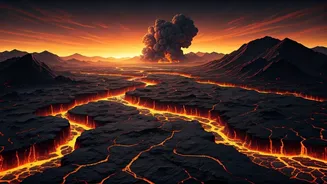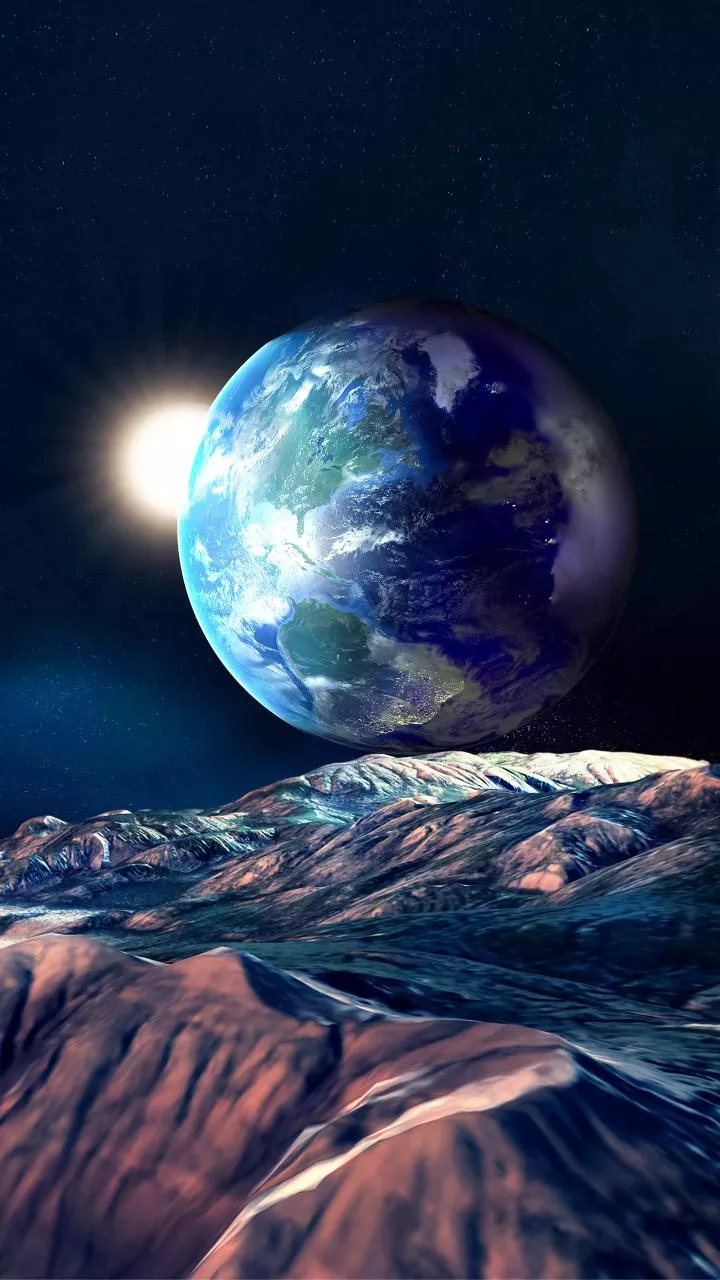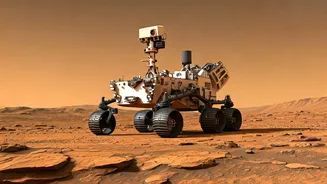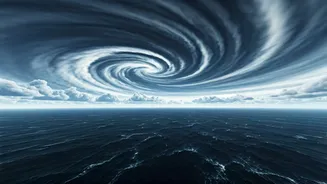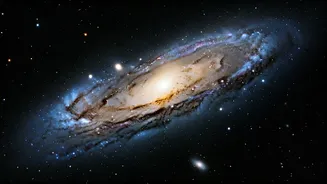Early Earth's Inferno
The early Earth, a vastly different planet from the one we know today, was a place of intense geological activity. Volcanic eruptions were commonplace,
spewing molten rock and gases across the landscape. The atmosphere was also very different, lacking the oxygen-rich composition we currently breathe. It was a volatile period where the planet was constantly reshaping itself, with fire being a primary agent. In essence, fire was instrumental in this initial terraforming phase, not only through direct eruptions, but also in the release of gases that would later contribute to atmospheric changes. The early conditions were harsh, with fire being a constant, yet this very adversity created the groundwork for the future emergence of life. It’s hard to imagine life without this primordial inferno. This initial phase was absolutely critical for setting the stage for everything that would follow, from the formation of landmasses to the very composition of the air.
Volcanoes: Continent Creators
Volcanoes acted like gigantic sculptors, shaping the nascent continents through their eruptions. Over eons, the constant flow of lava and ash gradually built up landmasses. The immense heat released by volcanic activity also caused significant shifts in Earth's crust. It is a process of creation, and destruction, occurring in the same place. This continuous cycle had a ripple effect, influencing the distribution of the oceans and the subsequent creation of climate patterns. The lava, which hardened into rock, and the gases released, interacted to form the essential environment of life. Moreover, volcanic islands emerged from the ocean, creating new terrains. This complex process laid the foundation upon which life would eventually flourish. The fire, which one might consider to be purely destructive, was a key element in shaping the physical environment in which life, as we know it, could develop.
Atmospheric Transformation Begins
The gases released by volcanoes weren't just a byproduct; they were instrumental in altering the atmosphere. Early Earth had an atmosphere largely composed of gases harmful to life as we know it today. Volcanic activity, while seemingly destructive, released gases that gradually modified the atmospheric composition. One important shift was the increase in carbon dioxide levels. This had a warming effect, making the planet more habitable at a time when the sun was less powerful. The release of different gases also set the stage for the creation of an ozone layer, which would later shield the Earth from harmful solar radiation. This atmospheric change was essential for the eventual evolution of more complex life forms. The fiery processes that seemed catastrophic had a profound impact on setting the stage for a sustainable atmosphere.
Water and Continental Shifts
The heat generated by volcanoes and the gases released also influenced the presence and distribution of water on the planet. Water, vital for all known life, was affected by this fiery activity in multiple ways. The interactions between volcanic gases and the atmosphere affected rainfall patterns, which, in turn, eroded the land and began to shape continental formations. The shifting of tectonic plates, driven by the planet's internal heat, had a significant influence on the distribution of land and oceans. The creation of larger landmasses and the movement of continents gradually altered ocean currents and climate, playing an important role in creating diverse environments. This continuous cycle of change, propelled by fire, gradually crafted a planet capable of supporting life in all its myriad forms. Fire wasn't just burning; it was an architect of the world's most essential component, water.
Building Blocks for Life
The impact of fire extended beyond physical landscapes, indirectly influencing the development of life. The alteration of the atmosphere and the creation of diverse terrains created a wide range of habitats. These new conditions spurred chemical reactions and interactions that laid the groundwork for biological processes. These changes facilitated the creation of early organic molecules, which are the building blocks of life. Additionally, the interaction of minerals released from volcanic activity with the early oceans provided essential nutrients that were available to early life forms. The fire, although destructive, contributed to conditions suitable for the origination of life itself. The inferno had sculpted the scene for life's first actors.
